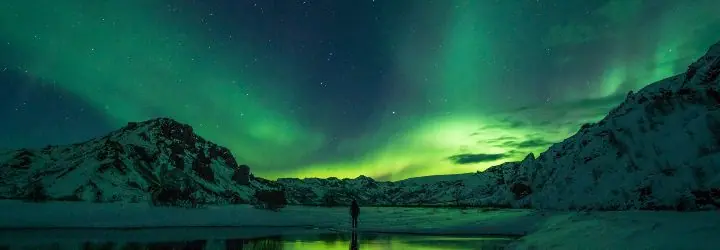Destination Focus: Taking An Astronomy Cruise

Cruises to the Northern Lights have increased in popularity in recent years, with more ships to the region and more lectures about the subject taking place onboard. And where better to see the Northern Lights, than onboard with the Norwegian coastal specialists, Hurtigruten?
As cruise ships seem to get bigger, the demand for cruises onboard smaller ships, to more intimate and interesting destinations are on the rise. Hurtigruten offer small, intimate and very different ships to a typical super-liner — in actual fact, they are nothing like a cruise ship in reality.
Hurtigruten's heritage comes from delivering post, passengers and produce along the Norwegian coast. They service towns and ports cut off from the rest of the world by heading up the coast whatever the weather. They moved into combining their trips with cruising some years ago and offer an altogether different experience, but a charming and ideal way to see the Northern Lights in their full glory.
Though the Northern Lights can be seen on a variety of Hurtigruten's sailings, they are running a specific Northern Lights astronomy cruise in November this year. MS Midnatsol, at 16,000 tonnes and only carrying 644 passengers, is a minnow by cruising standards, but this means she can get into places larger ships can't.
The astronomy cruise will take passengers from Bergen to the Arctic Circles — via regular cruise stops such as Alesund, Tromdheim and Tromso — with Dr John Mason onboard to offer his expertise on astronomy in a variety of lectures during the cruise.
Dr John Mason has been an astronomy expert for 30 years and sails onboard all of Hurtigruten's astronomy cruises. The former President of the British Astronomical Association is also an international affiliate Member of the American Astronomical Society and an honorary member of the Astronomical-Geodesical Society of Russia — such is his expertise. Mason has also appeared with Sir Patrick Moore on BBC TV's The Sky at Night.
With expertise of this level onboard, you can be assured that not only will the sightseeing aspect of the cruise be fantastic, but the learning aspect will be as well. You can expect to find him onboard, guiding passengers through the Aurora Borealis — the formal name of the Northern Lights — as well as offering lectures during the cruise.
So, when is best see the Northern Lights? They are usually seen between August and March, with the best time being between 9pm and 1am. Spending four days inside the Arctic Circle, while not guaranteeing anything, greatly improves your chances of seeing this stunning act of nature. Being on a ship geared up for cruising this rugged coastline whatever the weather is ideal for following the natural phenomena.
If visiting one of the planet's natural beauties, from the understated — yet charming — surrounds of a working ship as opposed to a huge cruise liner, along with the expert advice or a former President of the British Astronomical Association, then this cruise is for you. Just remember, the luxury is in seeing the Aurora Borealis, as opposed to the suite-filled ships of modern day cruising.